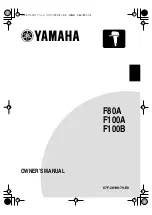
Hardware layout and configuration
UM1817
16/58
DocID026902 Rev 3
CAUTION:
1.
JP8 and JP12 are not allowed to be opened; otherwise STM32F091VCT6 would be
damaged due to a lack of power supply on its power pins.
2. Risk of explosion if battery is replaced by an incorrect type. Dispose of used batteries
according to the instructions.
2.4 Clock
source
Two clock sources are available on the STM32091C-EVAL evaluation board for
STM32F091VCT6 and RTC embedded.
•
X1, 32 KHz crystal for embedded RTC
•
X2, 8 MHz crystal with socket for STM32F091VCT6 microcontroller, it can be removed
from socket when internal RC clock is used.
See
and
.
Table 4. Low-voltage limitation
Peripheral
Component
IO name
Low-voltage limitation
Audio amplifier
U18
Audio input
2.2 V (VDDA)
Microphone amplifier
U15
Audio output
2.7 V (VDDA)
CAN
CN5
CAN
3 V (VDDIO2)
Smartcard
CN19
USART2
2.7 V (VDD)
Table 5. 32 KHz crystal X1 related solder bridges
Jumper
Description
SB11
PC14 is connected to the 32KHz crystal when SB11 is open.
(Default setting)
PC14 is connected to extension connector CN6 when SB11 is closed. In such case
R54 must be removed to avoid disturbance due to the 32 Khz quartz.
SB12
PC15 is connected to the32 KHz crystal when SB12 is open.
(Default setting)
PC15 is connected to extension connector CN6 when SB12 is closed. In such case
R55 must be removed to avoid disturbance due to the 32 Khz quartz.
Table 6. 8MHz crystal X2 related solder bridges
Jumper
Description
SB13
PF0 is connected to the 8 MHz crystal when SB13 is open.
(Default setting)
PF0 is connected to the extension connector CN7 when SB13 is closed. In such
case C18 and X2 must be removed.















































